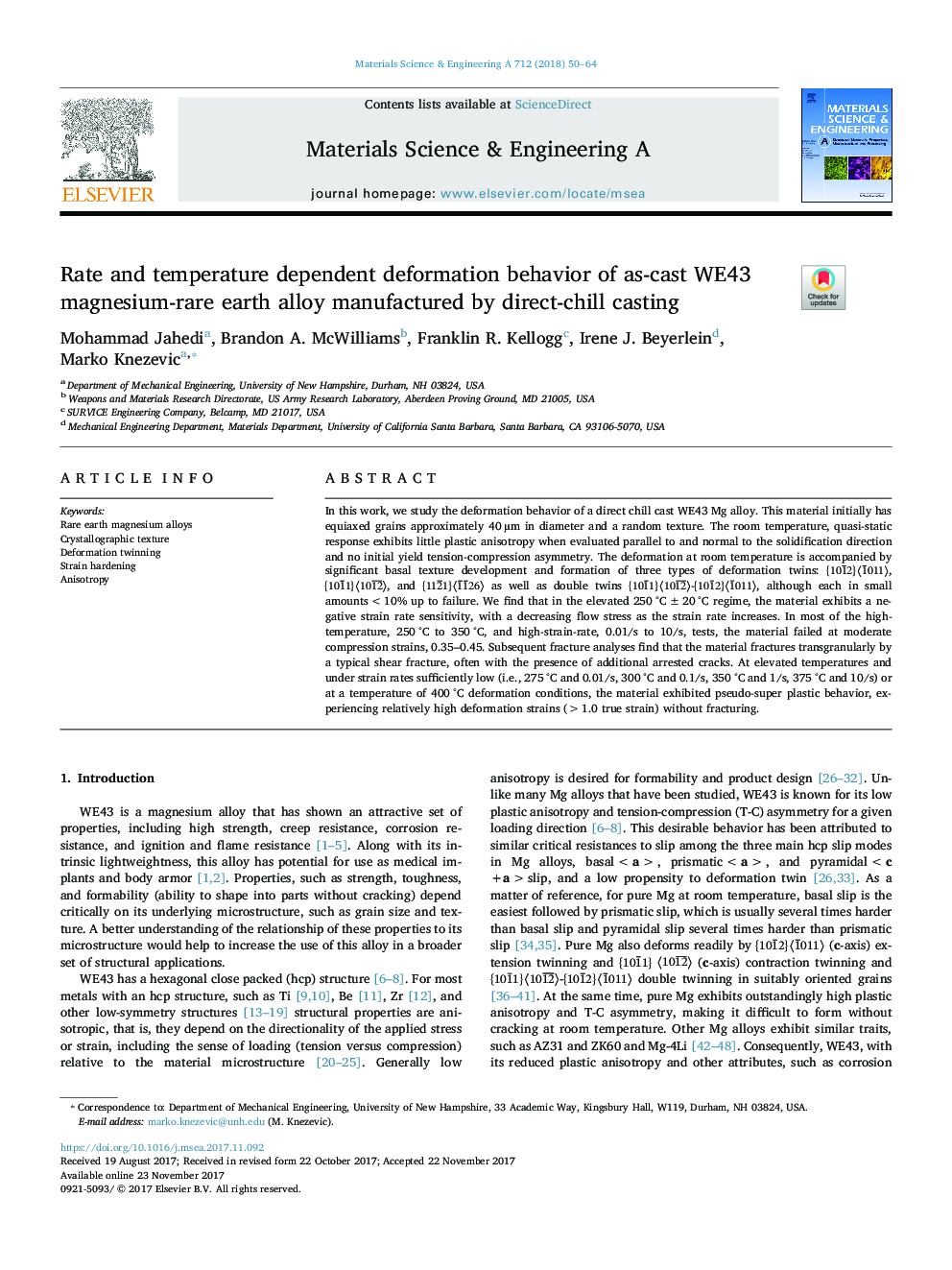| Article ID | Journal | Published Year | Pages | File Type |
|---|---|---|---|---|
| 7973848 | Materials Science and Engineering: A | 2018 | 15 Pages |
Abstract
In this work, we study the deformation behavior of a direct chill cast WE43 Mg alloy. This material initially has equiaxed grains approximately 40 µm in diameter and a random texture. The room temperature, quasi-static response exhibits little plastic anisotropy when evaluated parallel to and normal to the solidification direction and no initial yield tension-compression asymmetry. The deformation at room temperature is accompanied by significant basal texture development and formation of three types of deformation twins: {101Ì
2}ã1Ì
011ã, {101Ì
1}ã1012Ì
ã, and {112Ì
1}ã1Ì
1Ì
26ã as well as double twins {101Ì
1}ã1012Ì
ã-{101Ì
2}ã1Ì
011ã, although each in small amounts < 10% up to failure. We find that in the elevated 250 °C ± 20 °C regime, the material exhibits a negative strain rate sensitivity, with a decreasing flow stress as the strain rate increases. In most of the high-temperature, 250 °C to 350 °C, and high-strain-rate, 0.01/s to 10/s, tests, the material failed at moderate compression strains, 0.35-0.45. Subsequent fracture analyses find that the material fractures transgranularly by a typical shear fracture, often with the presence of additional arrested cracks. At elevated temperatures and under strain rates sufficiently low (i.e., 275 °C and 0.01/s, 300 °C and 0.1/s, 350 °C and 1/s, 375 °C and 10/s) or at a temperature of 400 °C deformation conditions, the material exhibited pseudo-super plastic behavior, experiencing relatively high deformation strains (> 1.0 true strain) without fracturing.
Related Topics
Physical Sciences and Engineering
Materials Science
Materials Science (General)
Authors
Mohammad Jahedi, Brandon A. McWilliams, Franklin R. Kellogg, Irene J. Beyerlein, Marko Knezevic,
